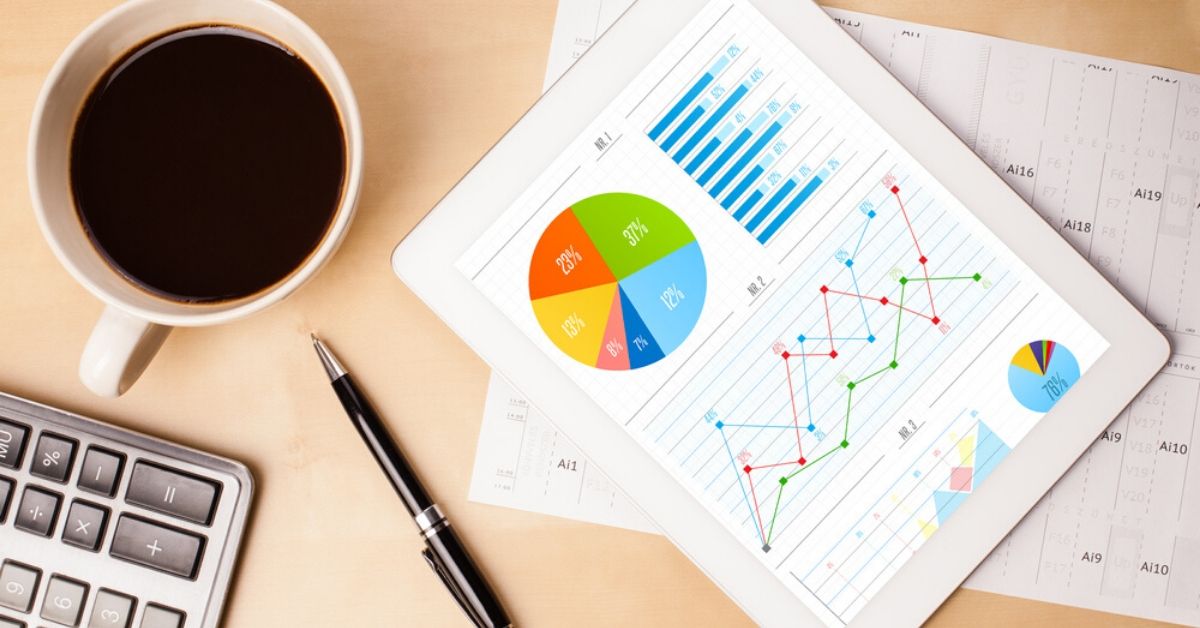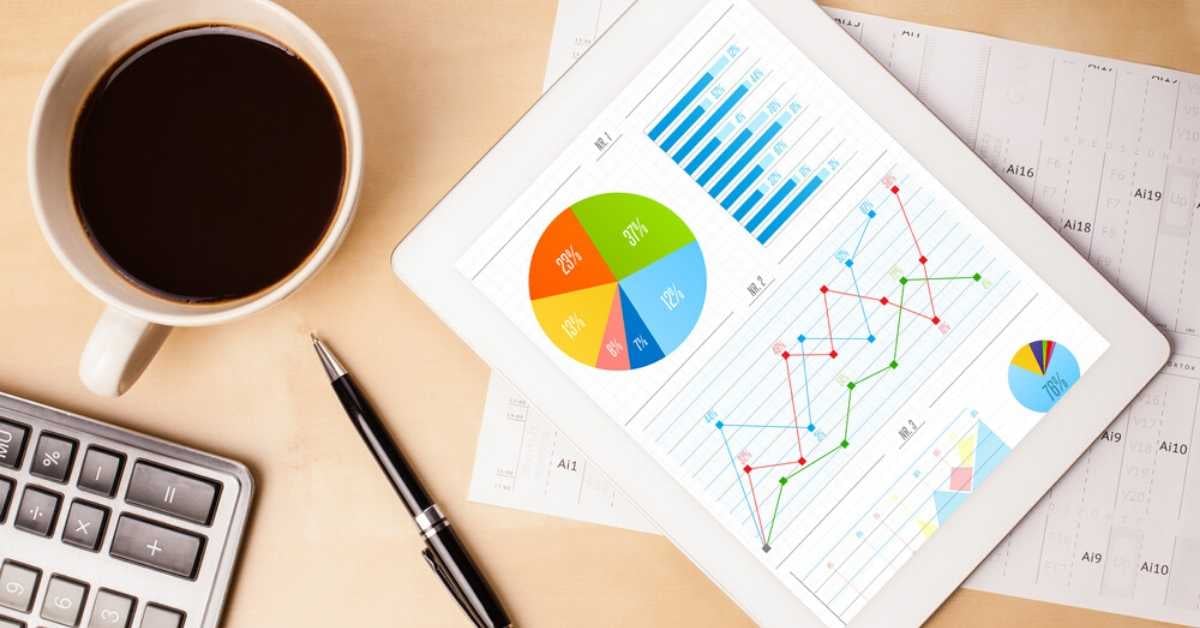Sap Fico Interview Questions
by Bhavya Sri on Jun 5, 2017 4:56:50 PM


Q1. Explain the term SAP FICO?
Ans: SAP FICO stands for FI ( Financial Accounting) and CO (controlling). In SAP FICO, SAP FI take cares about accounting, preparation of financial statements, tax computations etc, while SAP CO take cares of inter orders, cost sheet, inventory sheet, cost allocations etc. It is the software that stores data, and also computes them and retrieves the result based on the current marketing scenario. SAP FICO prevents data lost and also does the verification and reporting of data.
Q2. What are the other modules to which 'Financial Accounting' is integrated?
Ans: The other modules to which 'Financial Accounting' is integrated are
a) Sales and Distribution
b) Material Management
c) Human Resource
d) Production Planning
e) Controlling of financial transaction
Q3. In SAP FI what are the organizational elements?
Ans: The organizational elements in SAP FI are:
a) Company Code
b) Business Area
c) Chart of Account
d) Functional Area
Q4. Explain what is posting key and what does it control?
Ans: In order to determine the transaction type which is entered in the line item, a two digit numerical is used known as 'Posting Key'
Posting key determines
a) Account Types
b) Types of posting. Debit or Credit
c) Field status of transaction
Q5. What is the company code in SAP?
Ans: To generate financial statements like Profit and Loss statement, Balance sheets etc. company code is used.
Q6. How many Chart of Accounts can company code have?
Ans: You can have one Chart of Account for one company code which is assigned.
Q7.For a Company Code how many currencies can be configured?
Ans: There are three currencies that can be configured for a Company code, one is a local currency and two are the parallel currencies.
Q8. What are the options in SAP for Fiscal years?
Ans: Fiscal year in SAP is the way financial data is stored in the system. In SAP, you have 12 periods and four special periods. These periods are stored in fiscal year variant that is:
a) Calendar Year: From Jan-Dec, April-March
b) Year dependent fiscal year
Q9. What is a 'year shift' in SAP calendar?
Ans: SAP system does not know what is broken fiscal year e.g April 2012 to March 2013 and only understand the calendar year. If, for any business, the fiscal year is not a calendar year but the combination of the different months of two different calendar year and then one of the calendar year has to classified as a fiscal year for SAP and the month falling in another year has to be adjusted into the fiscal year by shifting the year by using the sign -1 or +1. This shift in the year is known as 'year shift'.
Example: April 2012 to Dec 2012 is our first calendar year, and Jan 2013 to March 2013 is our second year, now if you are taking April-12 to Dec-12 as your fiscal year, then Jan-13 to March-13 automatically becomes the second year, and you have to adjust this year by using -1 shift, and vice versa if the scenario is reversed, here you will use +1 shift.
Q10. What is year dependent fiscal year variant?
Ans: In a year dependent fiscal year variant, the number of days in a month is not as per the calendar month. For example, in year 2005, month January end on 29th, month Feb ends on 26th etc.
Q11. In SAP how input and output taxes are taken care?
Ans: For each country tax procedure is defined, and tax codes are defined within this. There is a flexibility to either expense out the Tax amounts or capitalise the same to stocks.
Q12. Explain what is validations and substitutions in SAP?
Ans: For each functional area in SAP Validation or Substitution is defined eg, Assets, Controlling etc. at the following levels
a) Document Level
b) Line item Level
Q13. What are the application areas that use validation and substitutions?
Ans:
- FI- Financial accounting
- CO-Cost accounting
- AM-Asset accounting
- GL-Special purpose ledger
- CS-ConsolidationPS-Project system
- RE-Real estate
- PC-Profit center accounting
Q14. In SAP what is the use of FSV ( Financial Statement Version) ?
Ans: FSV ( Financial Statement Version) is a reporting tool. It can be used to extract final accounts from SAP like Profit and Loss Account and Balance Sheet. The multiple FSV's can be used for generating the output of various external agencies like Banks and other statutory authorities.
Q15. What is a field status group?
'Ans: Field status groups' control the fields which come up when the user does the transactions. In FIGL (Financial General Ledger) master, the field status group is stored.
Q16. What is FI-GL (Financial- General Ledger) Accounting does?
Ans: To get an overview of external Accounting and accounts, G L (General Ledger)Accounting is used. It does the recording of all business transactions incorporated with all other operational areas in a software system and also ensures that the Accounting data is always complete and accurate.
Q17. What is the default exchange rate type which is picked up for all SAP transactions?
Ans: For all SAP transaction, the default exchange rate is M (Average Rate).
Q18. What are the methods by which vendor invoice payments can be made?
Ans:
- Manual payment without the use of any output medium like cheques etc.
- Automatic payments like DME (Data Medium Exchange), cheques, Wire transfer
Q19. What are the problems when business area is configured?
Ans: The problem faced when a business area is configured, is splitting of account balance which is more pertinent in the case of tax accounts.
Q20 For document clearing what are the customizing prerequisites ?
Ans: The customizing pre-requisite for document clearing is to check the items cleared and uncleared, and this is done by open item management. Open item management manages your outstanding account, i.e account payable and account receivable. For instance, an invoice item that has not yet been paid is recorded as open account until it is paid.
Q21. What is the importance of GR/IR ( Good Received/ Invoice Received) clearing account?
Ans: GR/IR ( Good Received/ Invoice Received) is an interim account. In the legacy system, if the goods are received and the invoice is not received, the provision is made, in SAP at the goods receipt. It passes the Accounting entry debiting the Inventory and crediting the GR/IR account. Similarly, when an invoice is received the vendor account is credited, and the GR/IR account is debited, the GR/IR will show as an un-cleared items till the time the invoice is not received.
Q22. What is parallel and local currency in SAP?
Ans: Each company code can have two additional currencies, in addition to the company code, currency entered to the company code data. The currency entered in the company code creation is called local currency and the other two additional currencies are called parallel currencies. Parallel Currencies can be used in foreign business transactions. In order to do international transaction, parallel currency can be used. The two parallel currencies would be GROUP CURRENCY and HARD CURRENCY.
Q23. Where can you use the internal order?
Ans: To track the cost, internal orders are used; they are proposed to be incurred over on a short term basis.
Q24. Is it possible to calculate depreciation to the day?
Ans: Yes, it is possible to calculate depreciation, to do that you have to switch on the indicator Dep. to the day in the depreciation key configuration.
Q25. In Asset Accounting what is the organizational assignments?
Ans: In Asset Accounting, chart of depreciation is rated as the highest node, and this is assigned to the company node. All the depreciation calculations are stored under the chart of depreciation.
Q26. What is the importance of asset classes? What asset classes are there?
Ans: The asset class is the main class to classify assets. Every asset must be assigned to only one asset class. Example of asset class is Furniture & Fixtures, Plant & Machinery, and Computers etc. The asset class also contains G1 account, when any asset is procured, G1 account is debited. Whenever you create and asset master, it becomes mandatory to mention the assest class for which you are creating the required assets. So, whenever any asset transaction occurs, the G1 account attached to the asset class is automatically picked up and the entry is passed. You can also specify the default values for calculating the depreciation values and other master data in each asset class.
Q27. How capital WIP (Work In Process) and Assets accounted for in SAP?
'Ans: Capital WIP' is referred to as Assets under construction in SAP and is represented under specific asset class. Depreciation is not charged under 'Capital WIP' usually. The cost incurred on building a capital asset can be booked to an 'internal order' and through the settlement procedures, and can be posted onto an 'Asset Under Construction'.
Q29. What are the major components of Chart of Accounts?
Ans: The major components of Chart of Accounts are:
- Chart of account key
- Name
- Maintain Language
- Length GL account number
- Controlling Integration
- Consolidation-Group chart of accounts
- Block indicator
Q29.What is credit control area in SAP?
Ans: To immune your company from the risk of bad debts and multiple outstanding receivable, you can set a credit limit for your customer by using credit control area in SAP. With the help of SAP, you can block the deliveries to your customer based on the credit limit and the accounts receivable balance in their account which is maintained by you.
Q30. How can you create Credit Control Area in SAP?
Ans: By using transaction code OB45 or path you can create Credit Control Area in SAP
SPRO> enterprise structure >maintain structure>definition>financial accounting>maintain credit control area and then enter the following description
UpdateName of the credit control area in SAPCurrency
- Description
- Credit Limit
- Risk Category
- Fiscal Variant
- Rep group
Q31. What is posting period variants?
Ans: In fiscal year posting period is a period for which the transactions figures are updated. The posting period variants in SAP is accountable to control which Accounting period is open for posting and ensures that the closed periods remain balanced.
Q32. Explain in simple terms what is field status and what does it control?
Ans: Field status group is a group configured in FSV (Field Status Variant) to maintain field status for G/L (General Ledger) accounts. It controls which field should suppress, display, optional and required.
Q33. What is short-end fiscal year?
Ans: A short-end fiscal year results when you change from a normal fiscal year to a non-calendar fiscal year, or other way around. This type of change happens when an enterprise becomes part of a new co-corporate group.
Q34. What is an account group and where it is used?
Ans: To control the data that needs to be entered at the time of the creation of a master record an account group is used. Account group exist for the definition of GL account, Customer Master and Vendor.
Q35. What is the purpose of "Document type" in SAP?
Ans:
- The purpose of " Document type" in SAP is
- Number range for documents are defined by it
- Types of accounts that can be posted are controlled by it, e.g Assets, Vendor, Customer, Normal GL account
- It is used for the reversal of entries
Q36. Is business area at company code level?
Ans: No. Business area is at client level which means other company codes can also be posted to the same business area.
Q37. In SAP, Customer and Vendor code are stored at what level?
Ans: The Vendor and Customer codes are stored at the client level. It means that by extending the company code view any company code can use the customer and vendor code.
Q38. How are tolerances for invoice verification defined?
Ans: Tolerance determines whether the payable places matching or tax hold on the invoice. The following are the instances of tolerance can be defined for Logistic Invoice Verification.
a) Small differences
b) Moving average price variances
c) Quantity variances
d) Price variances
Q39. What is a country Chart of Accounts?
Ans: Country Chart of Accounts contains G/L (General Ledger) accounts needed to meet the country's legal requirements.
Q40. What is APP in SAP Fico?
Ans: APP stands for 'Automatic Payment Program'; it is a tool provided by SAP to companies to pay its vendors and customers. APP tools help to avoid any mistakes taken place in posting manually. Also, when number of employees is more in the company, payment through APP becomes more feasible.
Click Here<SAP FICO>
Q41. In SAP FICO what are the terms of payment and where are they stored?
Ans: Payment terms are created in the configuration and determine the payment due date for vendor/customer invoice.
They are stored on the customer or vendor master record and are pulled through onto the customer/vendor invoice postings. The due date can be changed on each individual invoice if required.
Q42. What are one-time vendors?
Ans: In certain companies, especially the one dealing with high cash transactions, it is not practical to create new master records for every vendor trading partner. One time vendors allows a dummy vendor code to be used on invoice entry and also the information which is usually stored in the vendor master.
Q43. What are the standard stages of the SAP payment run?
Ans: The following steps are the standard stages of the SAP payment run
- Entering of parameters ( Vendor Accounts, Company Codes, Payment Methods)Proposal Scheduling – the system proposes the list of invoice paid
- Payment booking- the booking of the actual payments in the ledger
- Printing of payment forms ,example cheques
Q44. In Accounts Receivable, what is the difference between the 'Residual Payment' and 'Part Payment' methods of allocating cash?
Ans: 'Residual payment' and 'Part payment' are the two methods for allocating partial methods from customers. For example, an invoice for $100 is generated, customer has paid $70. Now this $70 will be off-set and leaving the remaining balance $30. With residual payment, the invoice is cleared for the full value of $100 and a new invoice is generated for the remaining balances $30.
Q45. What is "dunning" in SAP?
'Ans: Dunning' is the process by which payment chasing letters are issued to customers. SAP can determine which customers should receive the letters and for which overdue items. Different letters can be printed in SAP depending on the overdue payment date, with a simple reminder. With the help of dunning level on the customer master, we can know which letter has been issued to the customer.
Q46. What is the purpose of the account type field in the GL (General Ledger) master record?
Ans: At the end of the year, profit and loss accounts are cleared down to the retained earnings balance sheets account. The field contains an indicator which is linked to a specific GL (General Ledger) accounts to use in this clear down.
Q47. Explain what is recurring entries and why are they used?
Ans: Recurring entries can eliminate the need for the manual posting of Accounting documents which do not change from month to month. For example, an expense document can be generated which can be scheduled for the last days of each month or whenever an individual wants it. Usually multiple recurring entries are created at one go and then processed all together as a batch month end using transaction.
Q48. What is a 'Value Field' in the CO-PA module?
Ans: Value fields are number or value related fields in profitability analysis such as quantity, sales revenue, discount value etc.
Q49. What are the statistical internal orders?
Ans: Statistical internal orders are dummy cost objects used for reporting and analysis purposes. It must be posted to in conjunction with a real object such as a cost center.
Q50. For what purposes internal orders can be used?
Ans: You can use internal orders for
- Overhead Orders: It monitors internal jobs settled to cost centres
- Investment Orders: It monitors internal jobs settled to fixed assets
- Accrual Orders: Offsetting posting of accrued costs calculated in CO
- Orders with Revenue: It display the cost controlling parts of Sales and Distribution, it does not affect the core business of the company
Q51. What is financial accounting?
SAP FI stands for Financial Accounting and it is one of important module of SAP ERP. It is used to store the financial data of an organization. SAP FI helps to analyze the financial condition of a company in the market. It can integrate with other SAP modules like SD, PP, SAP MM, SAP SCM etc.
Q52. Why do we use SAP FI?
Ans: SAP Financials accounting module enables you to manage financial accounting data within an international framework of multiple companies, currencies, and languages. SAP FI module mainly deals with the below financial components −
- Fixed asset
- Accrual
- Cash journal
- Accounts receivable and payable
- Inventory
- Tax accounting
- General ledger
- Fast close functions
- Financial statements
- Parallel valuations
- Master data governance
Q53. What are the different submodules in SAP FI?
Ans:
- General Ledger
- AR/AP
- Banks
- Fixed Assets
- Travel Management
- Lease Accounting, etc.
Q54. Why do we create Profit Centers in Controlling?
Ans: The main aim of creating a Profit Center in Controlling is to analyze the cost of a product line or a business unit.
You can also generate profit and loss accounts according to Profit Center and also generate balance sheets however Profit center should only be used for internal reporting purposes.
The key components of a profit center includes - name of the profit center, the controlling area under which it is assigned, time period, person responsible for the profit center, standard hierarchy, etc.
Q55. What do you understand by Product costing in SAP Controlling?
Ans: SAP CO-Product Costing module is used to find the value of internal cost of products. It is also used for profitability and management accounting for production.
While configuring Product Costing, it involves two areas for setting −
- Product Cost Planning
- Cost Object Controlling
Q56. How do you perform Profitability analysis in SAP CO? What are the different types of profitability analysis?
Ans: SAP CO-PA is used to analyze the market segments classified as products, customers, sales area, business area, etc.
SAP CO Profitability Analysis (CO-PA) is used for the evaluation of Market segments, which is classified according to −
- products, customers, and orders
- or any combination of these
- or Strategic business units such as sales organizations
- or business areas, with reference to company's profit
- or contribution margin
There are two types of Profitability Analysis are supported −
- Costing-based
- Account-based
Q57. What is the use of FI-Asset Accounting component?
Ans: The FI-Asset Accounting (FI-AA) component is used for managing the fixed assets in FI system. In Financial Accounting, it serves as a subsidiary ledger to the General Ledger, providing detailed information on transactions involving fixed assets.
Q58. What are the common types of reports that can be used for Account Analysis (A/R)?
Ans: There are many types of reports that can be used for account analysis (A/R) −
- Customer Line Item Analysis
- Balance Analysis
- Customer Evaluation Report
Q59.Name few of the tables in G/L accounting and customizing in FI?
Ans:
| SKAS | G/L Account Master (Chart of Accounts – Key Word list) | MANDT / SPRAS / KTOPL / SAKNR / SCHLW |
| SKB1 | G/L Account Master (Company Code) | MANDT / BUKRS / SAKNR |
| FI-GL-GL (FBSC) | General Ledger Accounting: Basic Functions - R/3 Customizing for G/L Accounts | |
| FIGLREP | Settings for G/L Posting Reports | MANDT |
| TSAKR | Create G/L account with reference | MANDT / BUKRS / SAKNR |
| KOMU | Account Assignment Templates for G/L Account items | MANDT / KMNAM / KMZEI |
60) What is automatic payment program?
Ans: Automatic Payment Program serves the purpose of posting accounts payable like payment to a vendor based on vendor invoices automatically, shortly termed as APP.
It is used to find out due/overdue invoices and to process list of customer and vendor invoices to make payments in one go. APP can’t be used for all company codes from different countries.
APP has below categories −
- Setup all company codes
- Setup paying company codes
- Payment method per country
- Payment method per country code
- Bank Selection
- House Bank
Click Here<SAP FICO>
You May Also Like
These Related Stories

SAP SD Interview Questions

SAP PS Interview Questions


No Comments Yet
Let us know what you think